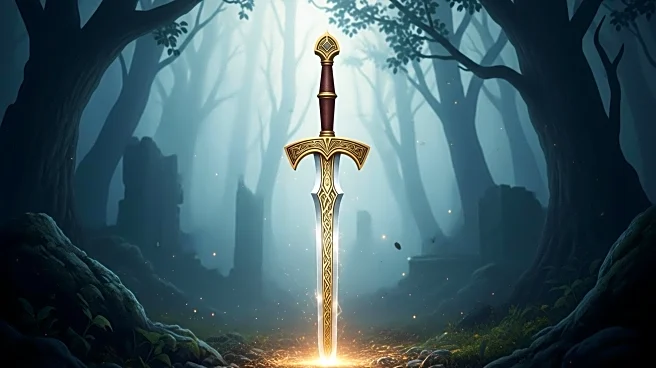What is the story about?
What's Happening?
The New York Times has released its latest crossword puzzle, featuring a series of creative and challenging clues designed to engage solvers. Among the notable clues is 'Queen’s guard?' which cleverly refers to a 'KILLER BEE' rather than a traditional chess piece or royal protector. Another intriguing clue involves a language name composed of four consecutive U.S. state postal abbreviations, leading to the answer 'MANDARIN.' The puzzle also includes playful entries such as 'DUD' for 'Big bust' and 'RAP BATTLE' for 'Spitting contest?' These clues reflect the puzzle's aim to entertain and challenge both novice and experienced solvers.
Why It's Important?
Crossword puzzles like those published by The New York Times are significant for their role in promoting cognitive engagement and entertainment. They offer a mental workout that can enhance vocabulary, problem-solving skills, and lateral thinking. The creative nature of the clues in this puzzle exemplifies the evolving art of crossword construction, which continues to attract a dedicated following. For many, solving these puzzles is a daily ritual that provides a sense of accomplishment and mental stimulation. The New York Times crossword is particularly influential, often setting trends in puzzle design and difficulty.
What's Next?
As crossword enthusiasts tackle this latest puzzle, the New York Times will continue to innovate and release new puzzles regularly. Solvers can look forward to more inventive clues and themes that challenge their linguistic and logical skills. The ongoing popularity of these puzzles suggests that the New York Times will maintain its position as a leader in the crossword community, potentially inspiring other publications to adopt similar creative approaches.
Beyond the Headlines
The cultural impact of crossword puzzles extends beyond mere entertainment. They serve as a bridge between generations, with many families sharing the tradition of solving puzzles together. Additionally, the puzzles often reflect contemporary language and cultural references, providing a snapshot of societal trends and interests. The New York Times crossword, in particular, is known for its ability to incorporate current events and popular culture into its clues, making it a dynamic and relevant form of media.
AI Generated Content
Do you find this article useful?














